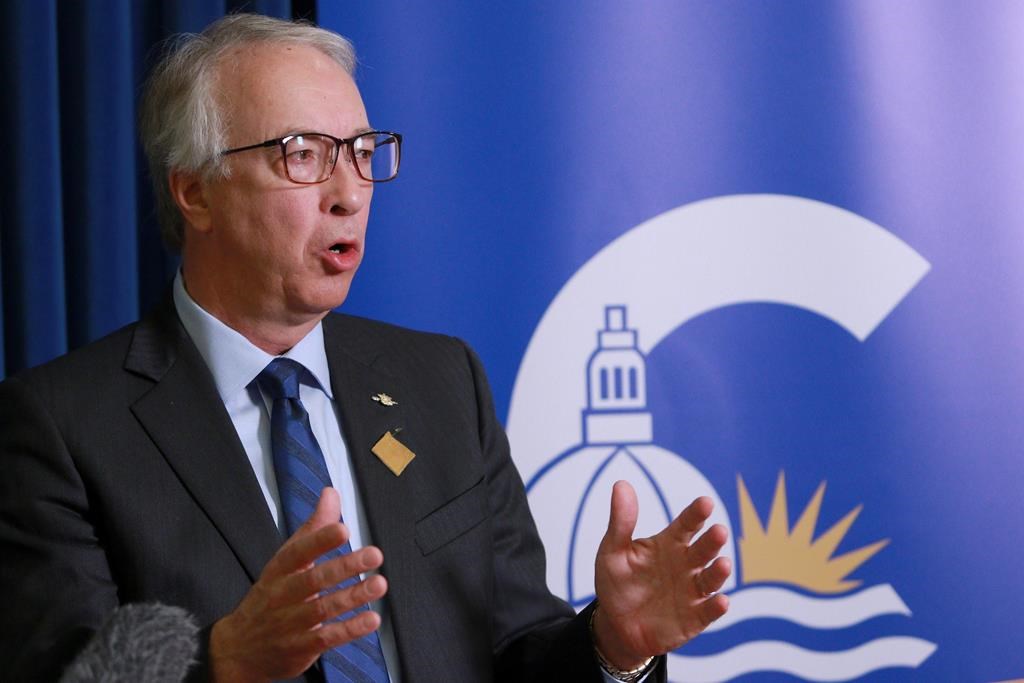Expert: remains found at former Kamloops residential school may be one of many discoveries
Posted May 29, 2021 2:42 pm.
Last Updated May 29, 2021 8:10 pm.
KAMLOOPS (NEWS 1130) — After 215 children’s bodies were found at a former residential school site in Kamloops – one expert in Indigenous studies says this may just be the beginning of uncovering a horrific history of violence experienced by Indigenous children in residential schools.
Katherine Morton Richards is a Ph.D. candidate at Memorial University in Newfoundland, and she works on anti-colonial research in Canada, particularly about residential schools. She tells NEWS 1130 the remains found sheds more light on the countries dark history with the institutions and is a devastating constant reminder “of the intensity of colonial violence and the violence faced by Indigenous children through the residential school system.”
“It’s one thing to know about the residential school system. And it’s another thing to hear about the very real material number of children who were killed,” she says.
“Certainly [this is] saddening, horrific, but also really a testament to the local First Nation who’s been spearheading this effort to make sure that these families were able to get some opportunity to say goodbye to their family members.”
The remains were confirmed last weekend with the help of a ground-penetrating radar specialist, according to the Tk’emlups te Secwépemc First Nation.
Since there was no consistent way of reporting fatalities or mortality rates within residential schools, Richards says it’s why the Truth and Reconciliation Commission of Canada’s Missing Children Project is so critical.
“Following 1920, the federal government was no longer receiving any sort of record of mortality in these schools,” she explains.
“If you think about the 80 schools in operation — at sort of the peak of the program — it’s really important to remember that even though they weren’t being reported, there were still very much mortalities taking place in these schools. And so, as much as people think, ‘Oh well, there’s marked burial grounds, people are kind of aware of the scope of the issue.’ There’s so much that’s left to still be discovered due to that real lack of record-keeping.”
However, she adds the recent findings don’t mean it wasn’t known to all people.
“Indigenous people, for generations, have known about these issues,” she says.
“It’s sort of as a shock for people within settler colonial Canada, but certainly, this isn’t a shock for local Indigenous populations that have known for a long time that this work needed to be done so desperately.”
RELATED STORIES:
-
‘We know they didn’t go home’: B.C. residential school survivor mourns discovery of children’s remains
-
Discovery of children’s remains at former Kamloops residential school an ‘unthinkable loss’
-
Remains of 215 children found at former Kamloops residential school
‘No real clear path forward’
While Richard admits the work to collect information and identify children is being done, she says there’s the opportunity for improvements.
She says with the potential of finding more unknown burial grounds, so far there hasn’t been a real clear path forward to what needs to happen to these sites.
“A lot of these sites, they’re left in this sort of weird position. Some have been demolished, some have been repurposed.
“As a result, sometimes there’s the breakdown in making sure that information about burials is passed on effectively. So, I think certainly the potential is there for more sites, such as this one to be found.”
But she adds if discussions are going into what to do with burial sites found, “the ultimate decision needs to be placed with the Indigenous populations and nations that are closest to the sites.
“There’s real work that needs to be done to determine what should happen with these sites, and also how to appropriately manage really, really difficult places.”
For example, Richards says, “In some cases, they have been turned into sort of culturally appropriate sites: museums, heritage centers, or even memorial sites. But in other cases, there’s sort of question of what to do with a site that’s been left up to various levels of government with mixed results.”
Families left in the dark
Richards adds a part of the Missing Children’s Project to recover the children’s stories.
“Not only what they went through, but also the resiliency of their communities in overcoming sort of crushing oppression on the part of the colonial state.”
In a lot of cases, she explains that Indigenous families would not be notified when their child ‘disappeared.’
“They may months after the fact, be notified that their children had been unenrolled from the school, with no real explanation, sometimes they would get a very small explanation, such as you know, this child passed away, or this child ran away, and we no longer know where they are.
“But there will be no real opportunity for families to get any sort of closure or any sort of answer. And because these schools were set up to be entirely hostile to Indigenous families, there was no opportunity for families to communicate with the schools effectively to figure out what had happened.”
She adds, in many cases, children would succumb to disease or disasters within the school (like a fire).
“In these cases, information was so scarce, and families were really left wondering. There remains many, many families in Canada, who to this day, have family members that they have no answers for.”
To date, the Truth and Reconciliation Commission (TRC) has identified over 4,100 children’s deaths.
“This isn’t just Kamloops. This is something that I truly believe we’re going to see from coast to coast to coast.”
Plans are being made to identify and return the remains home, in an effort to eventually tell the stories of the children and bring peace to their families.
The remains include some children as young as three-years-old.
More needs to be done to implement Truth and Reconciliation calls to action
Dr. Cindy Blackstock, executive director at the First Nations Child and Family Caring Society says there are countless stories of neglect and abuse when it comes to Indigenous children, that must not go ignored.
“The stories of unmarked graves have been shared in communities for decades, and confirmed in the TRC final report. Unfortunately, there’s not been the type of support that’s needed to really find these unmarked graves,” she says, adding, ”
But determining the cause of death for each child to the degree that’s possible and getting justice is really important.”
Blackstock says it’s time for all Canadians to demand the implementation on all 94 TRC calls to action.
“Five years on, many of them are languishing with no real progress,” Blackstock says.
One of the top calls to action is to eliminate the inequity in Indigenous child welfare.
“The prime minister’s tweets about this, of condolence, those are welcome. And what would be even more welcome is if he stops the egregious treatment of today and stops fighting residential school survivors,” Blackstock says.
As Canadians learn about the story of the tragic deaths of 215 children in the residential school in Tk'emlups the Secwepemc First Nation, know this- Canada knew about the death rates in the schools, had tools to deal with it and chose not to. Thread https://t.co/L1cvjMbOjf pic.twitter.com/7ssqd4RcJH
— Cindy Blackstock (@cblackst) May 28, 2021
Blackstock adds one of the calls to action is to press the Catholic Church and the Pope apologize to residential school survivors and their descendants.
“For the Catholic Church to make proper reparations, and the Catholic Church has really been not fully committed to that,” she says.
Meanwhile, two local Roman Catholic bishops have issued statements related to the discovery in Kamloops.
Bishop Joseph Nguyen, Diocese of Kamloops, says he is expressing his deepest sympathy to Chief Rosanne Casimir and all who are mourning the tragedy.
“I offer assurance of my personal support, prayers and accompaniment to our First Nations community in Kamloops and beyond,” he says.
Nguyen says no words of sorrow can adequately describe the horrific discovery.
Michael Miller, Archbishop of Vancouver, says he is filled with deep sadness at the troubling news.
“The pain that such news causes reminds us of our ongoing need to bring to light every tragic situation that occurred in residential schools run by the Church,” he says. “We pledge to do whatever we can to heal the suffering.”
Blackstock says the federal government knows what it needs to do to support Indigenous children.
“You’ve got to act on those solutions. We can’t lose another generation of First Nations, Metis, and Inuit children due to government neglect,” she says.
– With files from Charlie Carey










